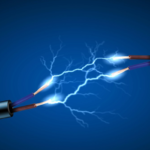How much thought have you given to electronic enclosures before right now? If you’re like most people, the answer is probably, “not much.” But how your electrical wires are enclosed can directly impact the performance of the device they are powering. Not only that, but having the proper electronic enclosure box for the job goes a long way toward ensuring the overall safety of the device and helping to protect your electrical wires from damage.
Here are some of the most common types of electrical enclosures and their prime uses.
Outdoor Electronic Enclosures
As you can probably guess, being weatherproof is one of the most important factors of an electrical enclosure box optimized for outdoor use. Picture the breaker box on the exterior of your house. This is a prime example of an outdoor enclosure box that is designed to protect the electrical components inside from rain, snow, wind, high heat or any other potentially hazardous environmental factors. Outdoor electronic enclosures can be made of carbon steel, stainless steel, aluminum and polycarbonate, and can be used for a broad range of applications including telecommunications, automation and energy. They are also available in a variety of sizes, which means that you can find the ideal outdoor enclosure box for just about any project you can imagine.
Indoor Electronic Enclosures
Enclosure boxes designed for indoor use don’t need to be as rugged and durable as their outdoor counterparts, but they do need to be able to offer protection against the elements to a smaller degree. Indoor-use electrical enclosure boxes help protect against normal levels of dust and dirt, and some are designed to also help shield against light drops of water for high-moisture areas. To help combat the danger of overheating electronic devices in an indoor environment, some manufacturers design indoor enclosure boxes with cutouts to help maximize air flow.
Fiberglass Electronic Enclosures
Able to be used both indoors and outdoors, fiberglass electronic enclosures are used to house terminal wiring, instrumentation, wireless equipment and other sensitive electrical components. Engineers have more flexibility with the design of fiberglass enclosure boxes because there are fewer restrictions with molding fiberglass than other materials like carbon steel or aluminum. Additionally, fiberglass can be a more cost-effective choice without sacrificing the integrity of the enclosure box, making it a popular option among engineers.
If you are trying to decide which electrical enclosure is most appropriate for your project, review these options and see which is the best fit for you. Keep in mind that how well your electrical components are protected makes a direct impact on their performance and safety for years to come. Contact Rapport, Inc. today for your electronic enclosure needs.




